Powerful conservation tech tools are gathering more data in the field than ever before. But without equally powerful and effective data management and processing tools, that data - no matter how groundbreaking or interesting - will not be able to reach its full potential for impact.
Data management can sometimes seem intimidating to conservationists, especially those just getting started in the world of conservation tech or experimenting with new data collection methods. While every community member's workflow and preferred data management and processing methods may be different, this group can serve as a resource to explore what works for others, share your own advice, and develop new strategies together.
Below are a few WILDLABS events dealing with datasets collected from various conservation tech tools:
Nicole Flores: How do I get started with Wildlife Insights?
Jamie Macaulay: How do I analyse large acoustic datasets using PAMGuard?
Sarah Davidson: Tools for Bio-logging Data in Conservation
Whatever conservation tech tools you work with, and whatever your preferred data management methods, we hope you'll find something helpful and effective in this group when you become a member!
No showcases have been added to this group yet.
- @cappel
- | she/her
Wildlife Science PhD candidate working on computer vision with camera traps and bioacoustics
- 0 Resources
- 5 Discussions
- 13 Groups
- @valengsb
- | she / her
GIS specialist for Audubon Americas | Biologist with an emphasis on Conservation and Sustainable Development | Innovative approaches in the study and monitoring of biodiversity for possible, biodiverse, and just futures.
- 0 Resources
- 0 Discussions
- 18 Groups
- @BernardaVA
- | She, her
Hello everyone, I am Bernarda, and I am currently doing a Master's degree in Natural Resources and Biodiversity. I have been working in bird monitoring and bird banding since 2018 in Ecuador. I have also been working at the Museum of Zoology at Universidad del Azuay
- 0 Resources
- 0 Discussions
- 5 Groups
Species360
Species360, Product Owner - ZIMS for Husbandry & Aquatics, supporting our mission to advance global conservation through collaborative knowledge sharing.

- 0 Resources
- 0 Discussions
- 4 Groups
- @capreolus
- | he/him
Capreolus e.U.
wildlife biologist with capreolus.at

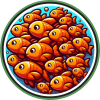



- 1 Resources
- 78 Discussions
- 16 Groups
- @Margaret
- | Her/she
- 0 Resources
- 1 Discussions
- 8 Groups
- @Gabonia
- | He/him
GABriel ONIfade A. (GABONIA / mrGab), is an educator, a CS and AI advocate, a Data Engineer, an AI Engineer, an Entrepreneur, and curriculum developer based in Brooklyn, New York (NYC DOE District 19). With a background in Systems Engineering, Gabriel specializes in CS & AI Edu.
- 1 Resources
- 1 Discussions
- 4 Groups
- @siddharth119
- | He/Him
Co-founder of Habitat Robotics, a conservation-tech non-profit
- 0 Resources
- 0 Discussions
- 3 Groups
Research software engineer working in computer vision for animal behaviour
- 1 Resources
- 1 Discussions
- 13 Groups
Natural Solutions
Computational ecologist - Engineer at Natural Solutions (France)



- 0 Resources
- 1 Discussions
- 13 Groups
- @KMucha
- | She/Her/Hers
Species360
Senior Product Owner of ZIMS for Studbooks and the SCTI Toolkit at Species360

- 0 Resources
- 0 Discussions
- 5 Groups
- @Lindakim
- | She
I am a GIS analyst in the field of conservation
- 0 Resources
- 1 Discussions
- 9 Groups
Article
WildID is excited to share their new camera trap processing and detection tools with WILDLABS! Using machine learning to identify Southern African wildlife species in large quantities of camera trap data, WildID's tool...
8 March 2021
Sol Milne's new paper, Drivers of Bornean Orangutan Distribution across a Multiple-Use Tropical Landscape, is now available. Using drones to detect orangutan nest density in aerial surveys (as shared during our...
12 February 2021
How can remotely monitoring fishing vessels allow us to prevent illegal and unsustainable fishing practices? Check out this blog post from Max Schofield, originally shared on OceanMind, to learn about how AIS (Automated...
2 February 2021
The 2021 Ebbe Nielsen Challenge has opened with the aim of recognizing innovative entries that leverage biodiversity data and tools from the GBIF network to advance open science.
20 January 2021
The Nature Conservancy's 2020 Geospatial Conservation Annual Report is now available to download! Featuring 25 case studies focused on the impact of geospatial science on conservation work, maps showcasing conservation...
17 December 2020
WILDLABS community members are invited to submit an Expression of Interest to Fisheries Innovation Scotland (FIS) to participate in two research projects involving conservation tech's role in the future of sustainable...
8 December 2020
WILDLABS member Meredith Palmer shared this great course module based around Snapshot Serengeti camera trap data, and developed for university biology courses. This material is ideal for introductory level biology...
25 November 2020
Introducing Movebank's Arctic Animal Movement Archive (AAMA), a collection of studies containing animal movement and other animal-borne sensor data from the Arctic and Subarctic. Through this collection of 214 studies ...
17 November 2020
In this article, Fulbright Scholar and National Geographic Explorer Kasim Rafiq discusses the potential to efficiently conduct wildlife surveys using cameras mounted to safari vehicles, as well as the workflow and AI...
10 November 2020
UN Environment Programme World Conservation Monitoring Centre seeks an intern to contribute to the mapping of nature’s contribution to the Sustainable Development Goals. This position will have the opportunity to work...
13 October 2020
Funding
Protecting elephants from conservation's most pressing issues like poaching and human-wildlife conflict requires big, bold, and innovative solutions. Hackster.io, Smart Parks, Edge Impulse, Microsoft, and several other...
11 August 2020
As we launch our new Sustainable Fishing Challenges group in the WILDLABS community, we are excited to welcome Daniel Steadman, the group manager, to give us an overview of three major areas in which #tech4wildlife...
4 August 2020
August 2025
October 2025
event
event
November 2025
event
September 2024
event
July 2024
event
87 Products
Recently updated products
| Description | Activity | Replies | Groups | Updated |
|---|---|---|---|---|
| Retweet on OpenSoundscape - great package and documentation that allows you to build your own CNNs! Note that this is in Python though. There are tons of bioacoustics... |
|
Acoustics, Data management and processing tools | 1 year ago | |
| @cmwainaina please take a look |
|
Animal Movement, AI for Conservation, Camera Traps, Connectivity, Data management and processing tools, East Africa Community, Emerging Tech, Ethics of Conservation Tech, Human-Wildlife Coexistence, Marine Conservation, Protected Area Management Tools, Geospatial, Sensors, Software Development | 1 year ago | |
| Hi @nyangetamagesa , i'm so grateful for our input. |
|
Human-Wildlife Coexistence, Data management and processing tools, East Africa Community, Women in Conservation Tech Programme (WiCT) | 1 year ago | |
| This was not the most significant or important update for the Mothbox, but it’s one I think is quite fun! It’s also quite... |
|
Data management and processing tools, Latin America Community | 1 year 1 month ago | |
| The use of synthetic training data such as interpolated sequence values is common, but fraught with the issue of your synthetic signal generating features that are not true to... |
|
Data management and processing tools, AI for Conservation | 1 year 1 month ago | |
| Hi all! I am researching the spatio-temporal movements of reintroduced eagles, using the recurse package in R Software (... |
|
Data management and processing tools | 1 year 1 month ago | |
| Tagging @Chelsea_Smith so she sees this :) |
|
Geospatial, Data management and processing tools, Protected Area Management Tools | 1 year 2 months ago | |
| Hi Sol,If the maximum depth is 30m, it would be worth experimenting with HydroMoth in this application especially if the deployment time is short. As Matt says, the air-filed case... |
|
Acoustics, AI for Conservation, Data management and processing tools, Emerging Tech, Sustainable Fishing Challenges | 1 year 3 months ago | |
| Congratulations! My first hydromoth was just arrived yesterday and so excited! Looking forward for the update from your project!!! |
|
Acoustics, Animal Movement, Climate Change, Conservation Tech Training and Education, Data management and processing tools, Emerging Tech, Open Source Solutions, Protected Area Management Tools, Sensors, Software Development, Latin America Community | 1 year 3 months ago | |
| Thanks, and that's a match! All these pictures are from a lab experiment and formated with AmphIdent. We took weekly belly pictures of several larvae. The aim of this google... |
|
Camera Traps, Data management and processing tools, Software Development | 1 year 3 months ago | |
| Can't beat Dan's list! I would just add that if you're interested in broader protected area management, platforms like EarthRanger and SMART are amazing, and can integrate... |
|
Data management and processing tools, Camera Traps, Conservation Tech Training and Education | 1 year 3 months ago | |
| First things first, our team — @jcguerra10 , @bmgarrido , and special acknowledgment to @Mantolehmann, who joined... |
|
Build Your Own Data Logger Community, Data management and processing tools, Sensors | 1 year 4 months ago |
Tech Tutors: How do How do I launch machine learning projects using MLOps?
3 February 2021 12:08pm
Using AIS Data to Investigate the World’s Fishing Ports
2 February 2021 12:00am
Webinar: How can data empower communities in marine management?
26 January 2021 12:00am
Event: Role of GIS in Ocean Conservation
 esri
esri
26 January 2021 12:00am
Opportunity: 2021 Ebbe Nielsen Challenge seeks open-data innovations for biodiversity
20 January 2021 12:00am
Workshop: Analyses of acoustic telemetry data with R
 European Tracking Network
European Tracking Network
15 January 2021 12:00am
Announcing the 2020 Geospatial Conservation Annual Report
17 December 2020 12:00am
FIS Call for Expressions of Interest (closed)
8 December 2020 12:00am
Making the Most of Tech Tutors Season 2!
30 November 2020 12:00am
Learning Resources: Exploring Species Interactions with Snapshot Serengeti
25 November 2020 12:00am
WILDLABS Tech Tutors: Season Two
24 November 2020 12:00am
How do I use open access remote sensing data to monitor fishing?
24 November 2020 12:00am
Introducing the Arctic Animal Movement Archive
17 November 2020 12:00am
Weekly Event: OTN Virtual Study Hall
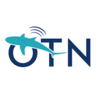 Ocean Tracking Network
Ocean Tracking Network
16 November 2020 12:00am
International Certificate Program in Environmental Data Analytics
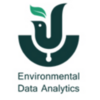 Environmental Data Analytics
Environmental Data Analytics
16 November 2020 12:00am
Using Computer Vision to Protect Endangered Species
10 November 2020 12:00am
Opportunity: Sustainable Development Goals Internship
13 October 2020 12:00am
Training Opportunity: HarvardX TinyML Course
 edX
edX
30 September 2020 12:00am
Tech Tutors: Review Session
3 September 2020 12:00am
Challenge: ElephantEdge
11 August 2020 12:00am
Webinar: Building location-based narratives
 esri
esri
11 August 2020 12:00am
Sustainable Fishing Challenges: Fishing Vessels of the Future
4 August 2020 12:00am
How do I use portable genomics in the field?
3 August 2020 12:00am
Automated Fish Identification and Abundance Using Artificial Intelligence
28 July 2020 12:00am
BearID To Go
21 July 2020 12:00am
How do I scale up acoustic surveys with Audiomoths?
25 June 2020 12:00am
Tech4Wildlife News: SMART Mobile
23 June 2020 12:00am
Ecology Live: Satellite Imagery, Land Cover Mapping, and More
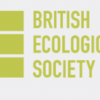 British Ecological Society
British Ecological Society
23 June 2020 12:00am
How do I perform automated recordings of bird assemblages?
 Carlos Abrahams
Carlos Abrahams
19 June 2020 12:00am
The Perfect Paw Print: Collecting Data with FIT
3 June 2020 12:00am





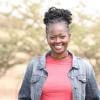
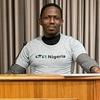









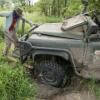
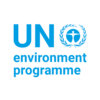
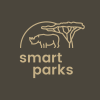
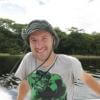




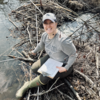

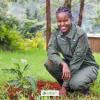







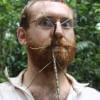

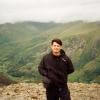





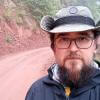











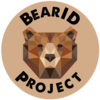
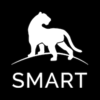

5 February 2021 7:16pm
Dan's comments about the need for technologists and conservationists to manage and share (properly annotated) data struck a chord with me, it was right at the end of the presentation.
I fired off a point into the chat "could your old background data be my background data?" or something similar, and it got me thinking...
(Firstly, sorry for clouding this issue with my simultaneous "Ian Tuna" joke)
In the context of using AI as described in EdgeImpulse example, lets say - audio.
Lets say Group A are trying to detect the roar of lions, and Group B are trying to detect the grunt of wild pigs, and lets imagine that is in roughly the same area of Africa. I mean they could both send out teams to capture the sound of their target animal, and the sound of NOT their target animal, e.g everything else.
Well if "serengetti sounds" was a known audio track, then all you need is the unique sound of the beast in question, am I right?